Integrating Survival Analysis with Bayesian Statistics to Forecast the Remaining Useful Life of a Centrifugal Pump Conditional to Multiple Fault Types
Abstract
1. Introduction
2. Background
2.1. Bayesian Networks
- A and B are events and ;
- is the posterior probability; the probability of event A occurring if B is true;
- is the likelihood; the probability of event B occurring if A is true;
- is the prior; the probability of event A without having any knowledge of B;
- is the marginal likelihood; the total probability of the evidence B.

2.2. Survival Analysis
3. Procedure
3.1. Pump System Specifications
3.2. Pump Fault Mechanisms
3.3. Data Generation
3.4. Diagnosing Pump Faults
- 1.
- Crest factor: The crest factor is defined as the ratio of the peak value of a signal to its RMS value (Figure 5). A crest factor value of 1 indicates no peaks. Crest factor is calculated aswhere is the maximum absolute value of the signal and is the root mean squared value of the signal.
- 2.
- Skewness: Skewness is used to measure whether the signal is negatively or positively skewed (Figure 6). It is obtained from the mean value of the probability density function of the signal. Skewness is calculated aswhere is the mean of x, is the standard deviation of x, and is the expected value of x.
- 3.
- Kurtosis: Kurtosis is used to quantify the peakness of a signal (Figure 7). A higher kurtosis value corresponds to a signal with more peaks that are greater than three times the signal RMS. Kurtosis is calculated as
3.5. Bayesian Network Creation for Forecasting
3.6. Data Structuring for the Bayesian Network
3.7. Forecasting Health Using the Bayesian Network
4. Case Study
5. Results
6. Discussion
7. Conclusions
8. Materials and Methods
Author Contributions
Funding
Institutional Review Board Statement
Informed Consent Statement
Data Availability Statement
Conflicts of Interest
Abbreviations
| NPP | Nuclear Power Plant |
| O&M | Operations and Maintenance |
| RUL | Remaining Useful Life |
| LSTM | Long Short-Term Memory |
| GPR | Gaussian Process Regression |
| CPT | Conditional Probability Table |
| GeNIe | Graphical Network Interface |
| SMILE | Structural Modeling, Inference, and Learning Engine |
| EM | Expectation Maximization |
References
- Why Nuclear Outages Are Actually a Good Things|Nuclear Information Center. Available online: https://nuclear.duke-energy.com/2018/03/13/why-nuclear-outages-are-actually-a-good-thing (accessed on 1 December 2022).
- Economics of Nuclear Power|World Nuclear Association. Available online: https://www.world-nuclear.org/information-library/economic-aspects/economics-of-nuclear-power.aspx (accessed on 15 November 2022).
- Liu, K.; Shang, Y.; Ouyang, Q.; Widanage, W.D. A Data-Driven Approach With Uncertainty Quantification for Predicting Future Capacities and Remaining Useful Life of Lithium-ion Battery. IEEE Trans. Ind. Electron. 2021, 68, 3170–3180. [Google Scholar] [CrossRef]
- Chen, Y.; Peng, G.; Zhu, Z.; Li, S. A novel deep learning method based on attention mechanism for bearing remaining useful life prediction. Appl. Soft Comput. 2020, 86, 105919. [Google Scholar] [CrossRef]
- Wang, B.; Lei, Y.; Yan, T.; Li, N.; Guo, L. Recurrent convolutional neural network: A new framework for remaining useful life prediction of machinery. Neurocomputing 2020, 379, 117–129. [Google Scholar] [CrossRef]
- Wang, W.; Lei, Y.; Yan, T.; Li, N.; Nandi, A. Residual convolution long short-term memory network for machines remaining useful life prediction and uncertainty quantification. J. Dyn. Monit. Diagn. 2021, 1, 2–8. [Google Scholar] [CrossRef]
- Zhang, Y.; Xin, Y.; Liu, Z.W.; Chi, M.; Ma, G. Health status assessment and remaining useful life prediction of aero-engines based on BiGRU and MMoE. Reliab. Eng. Syst. Saf. 2022, 220, 108263. [Google Scholar] [CrossRef]
- Dong, S.; Wang, P.; Abbas, K. A survey on deep learning and its applications. Comput. Sci. Rev. 2021, 40, 100379. [Google Scholar] [CrossRef]
- Li, S.; Fang, H.; Shi, B. Remaining useful life estimation of Lithium-ion battery based on interacting multiple model particle filter and support vector regression. Reliab. Eng. Syst. Saf. 2021, 210, 107542. [Google Scholar] [CrossRef]
- N, B.; Chowdhury, R. Remaining useful life (RUL) estimation of lead acid battery using Bayesian approach. J. Electr. Eng. Autom. 2020, 2, 25–34. [Google Scholar]
- Benker, M.; Furtner, L.; Semm, T.; Zaeh, M.F. Utilizing uncertainty information in remaining useful life estimation via Bayesian neural networks and Hamiltonian Monte Carlo. J. Manuf. Syst. 2021, 61, 799–807. [Google Scholar] [CrossRef]
- Chen, C.; Shi, J.; Lu, N.; Zhu, Z.H.; Jiang, B. Data-driven predictive maintenance strategy considering the uncertainty in remaining useful life prediction. Neurocomputing 2022, 494, 79–88. [Google Scholar] [CrossRef]
- Kapuria, A.; Spangler, R.M.; Lois, R.S.; Cole, D.G. Root cause analysis for condition monitoring using Bayesian networks. In Proceedings of the 2022 ANS Annual Meeting, Anaheim, CA, USA, 12 June 2022. [Google Scholar]
- Darwiche, A. Modeling and Reasoning with Bayesian Networks; Cambridge University Press: Cambridge, UK, 2009. [Google Scholar]
- Advantages of Pressurized Water Reactors|Stanford University. Available online: http://large.stanford.edu/courses/2017/ph241/shaw-s1/ (accessed on 1 May 2022).
- Power Reactors|NRC. Available online: https://www.nrc.gov/reactors/power.html/ (accessed on 20 January 2022).
- Badr, H.; Ahmend, W. Pumping Machinery Theory and Practice; John Wiley & Sons, Ltd.: Hoboken, NJ, USA, 2014. [Google Scholar]
- Brennen, C. Hydrodynamics of Pumps; Cambridge University Press: Cambridge, UK, 2012. [Google Scholar]
- Al-Obaidi, A.R. Investigation of effect of pump rotational speed on performance and detection of cavitation within a centrifugal pump using vibration analysis. Heliyon 2019, 5, e01910. [Google Scholar] [CrossRef] [PubMed]
- Al-Obaidi, A.R. Detection of cavitation phenomenon within a centrifgual pump based on vibration analysis technique in both time and frequency domains. Exp. Tech. 2020, 44, 329–347. [Google Scholar] [CrossRef]
- Reges, G.; Ribeiro, M.; Silva, T.; Abreu, O.; Reis, R.; Schnitman, L. Electric submersible pupm vibration analysis under several operational conditions for vibration fault differential diagnosis. Ocean. Eng. 2021, 219, 108249. [Google Scholar] [CrossRef]
- Casoli, P.; Pastori, M.; Scolari, F.; Rundo, M. A vibration signal-based method for fault identification and classification in hydraulic axial piston pumps. Energies 2019, 12, 953. [Google Scholar] [CrossRef]
- Zhu, Y.; Li, G.; Wang, R.; Tang, S.; Su, H.; Cao, K. Intelligent fault diagnosis of hydraulic pston pump based on wavelet analysis and improved AlexNet. Sensors 2021, 21, 549. [Google Scholar] [CrossRef] [PubMed]
- Vashishtha, G.; Kumar, R. Centrifugal pump impeller defect identification by the improved adaptive variational mode decomposition through vibration signals. Eng. Res. Express 2021, 3, 035041. [Google Scholar] [CrossRef]
- Damiano, B.; Blakeman, E.; Phillips, L. Detection and Location of Mechanical System Degradation by Using Detector Signal Noise Data; Technical Report; Oak Ridge National Lab.: Oak Ridge, TN, USA, 1994. [Google Scholar]
- BayesFusion, LLC. GeNIe Modeler, SMILE Engine. Academic Version 2.4.4601.0. Available online: http://www.bayesfusion.com/ (accessed on 29 April 2021).
- Sammaknejad, N.; Zhao, Y.; Huang, B. A review of the expectation maximization algorithm in data-driven process identification. J. Process. Control. 2019, 73, 123–136. [Google Scholar] [CrossRef]
- Davidson-Pilon, C. lifelines: Survival analysis in Python. J. Open Source Softw. 2019, 4, 1317. [Google Scholar] [CrossRef]
- Spangler, R.M.; Maccarone, L.T.; Cole, D.G. Modeling operations and maintenance planning decisions under uncertainty using Bayesian networks. In Proceedings of the 2020 ANS Virtual Winter Meeting, Virtual, 19 November 2020. [Google Scholar]
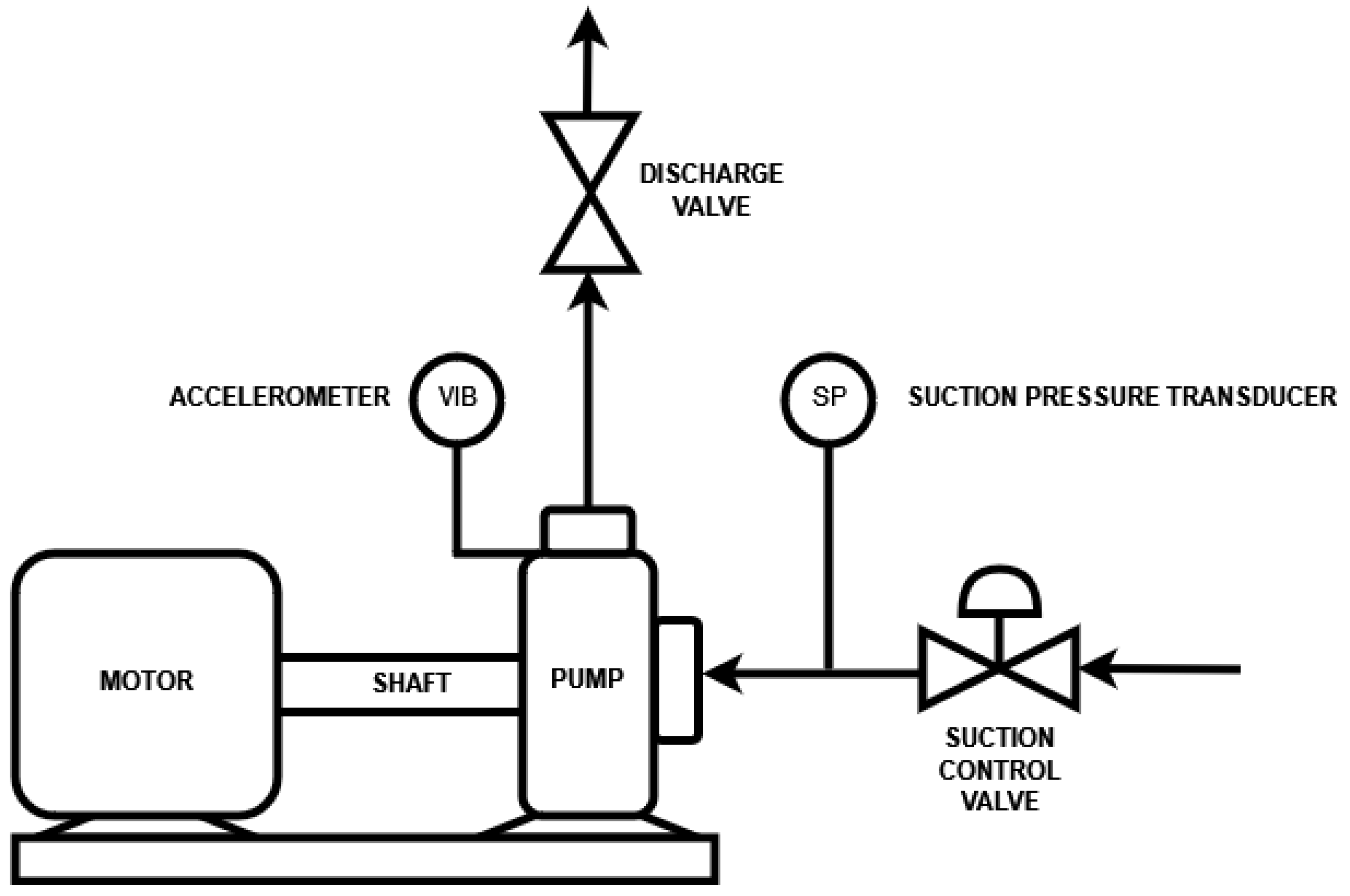
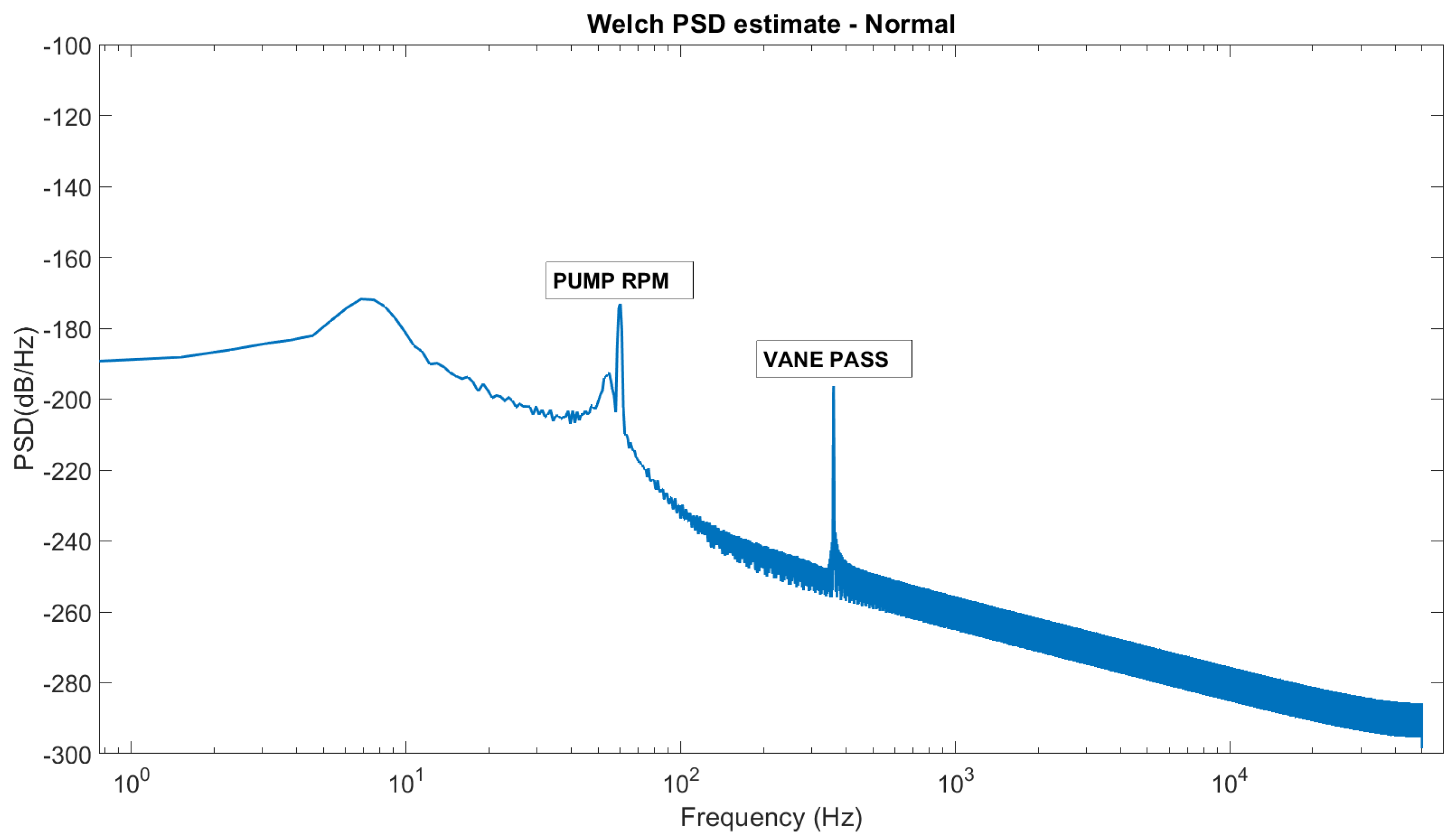
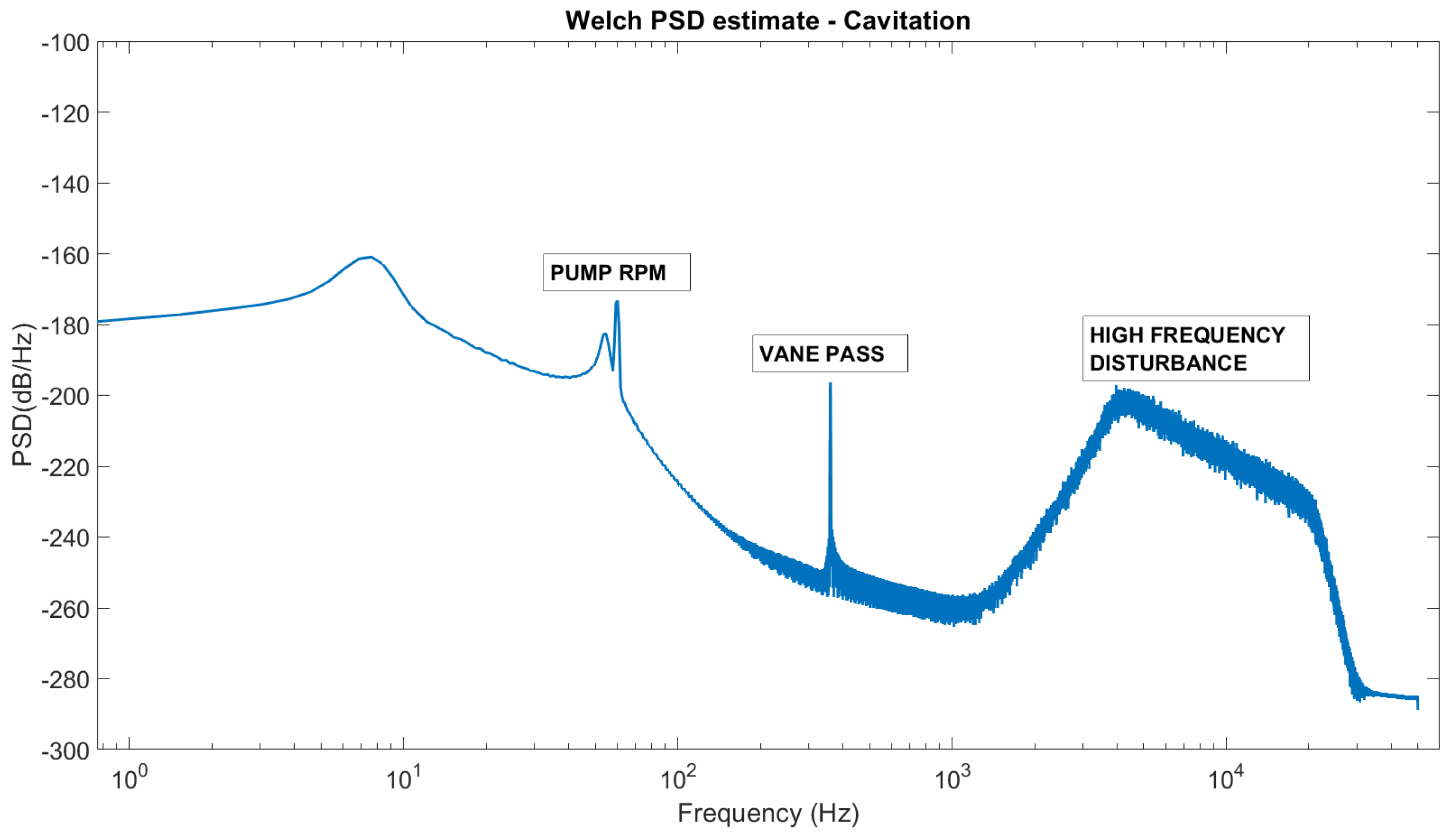
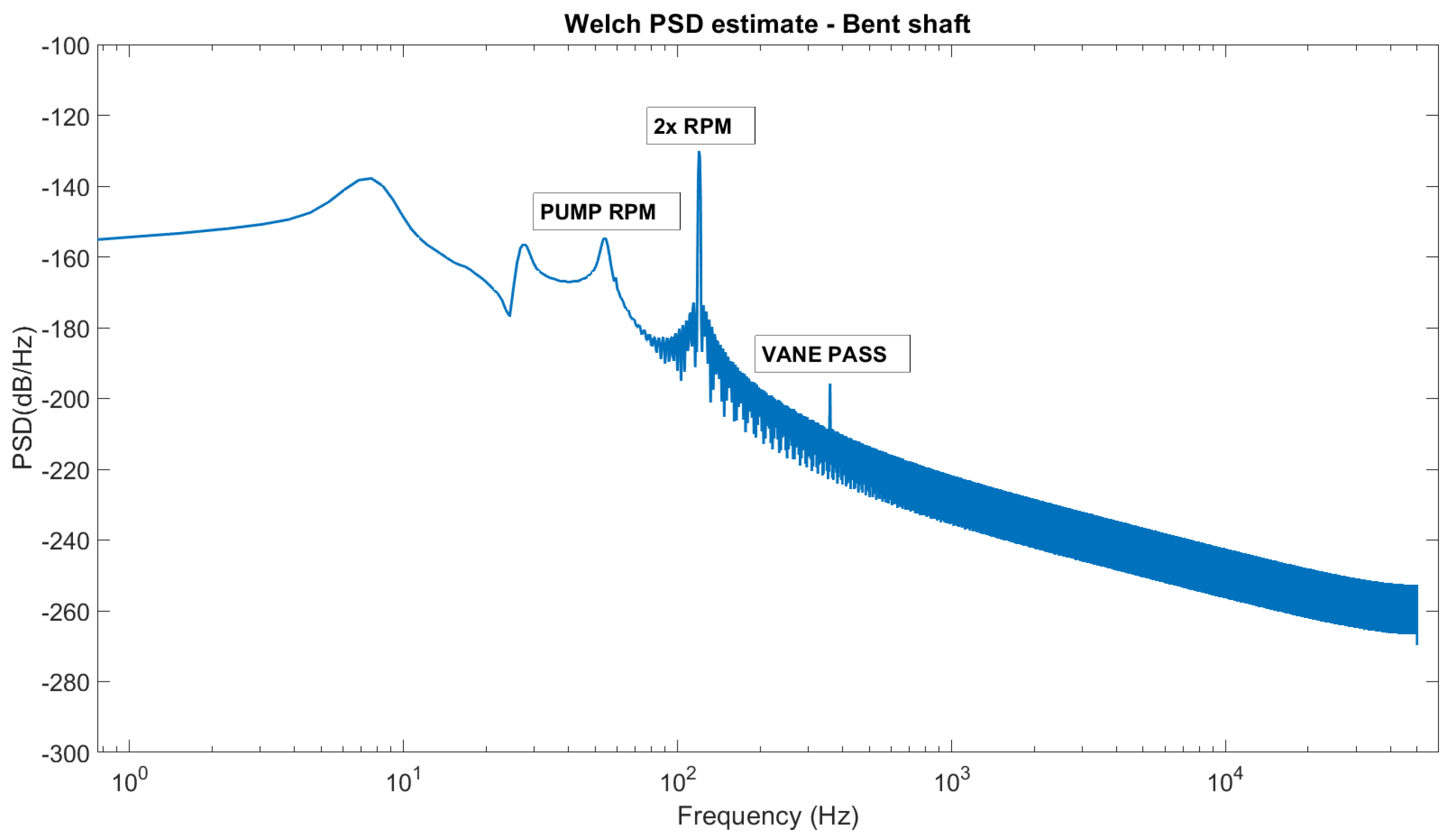
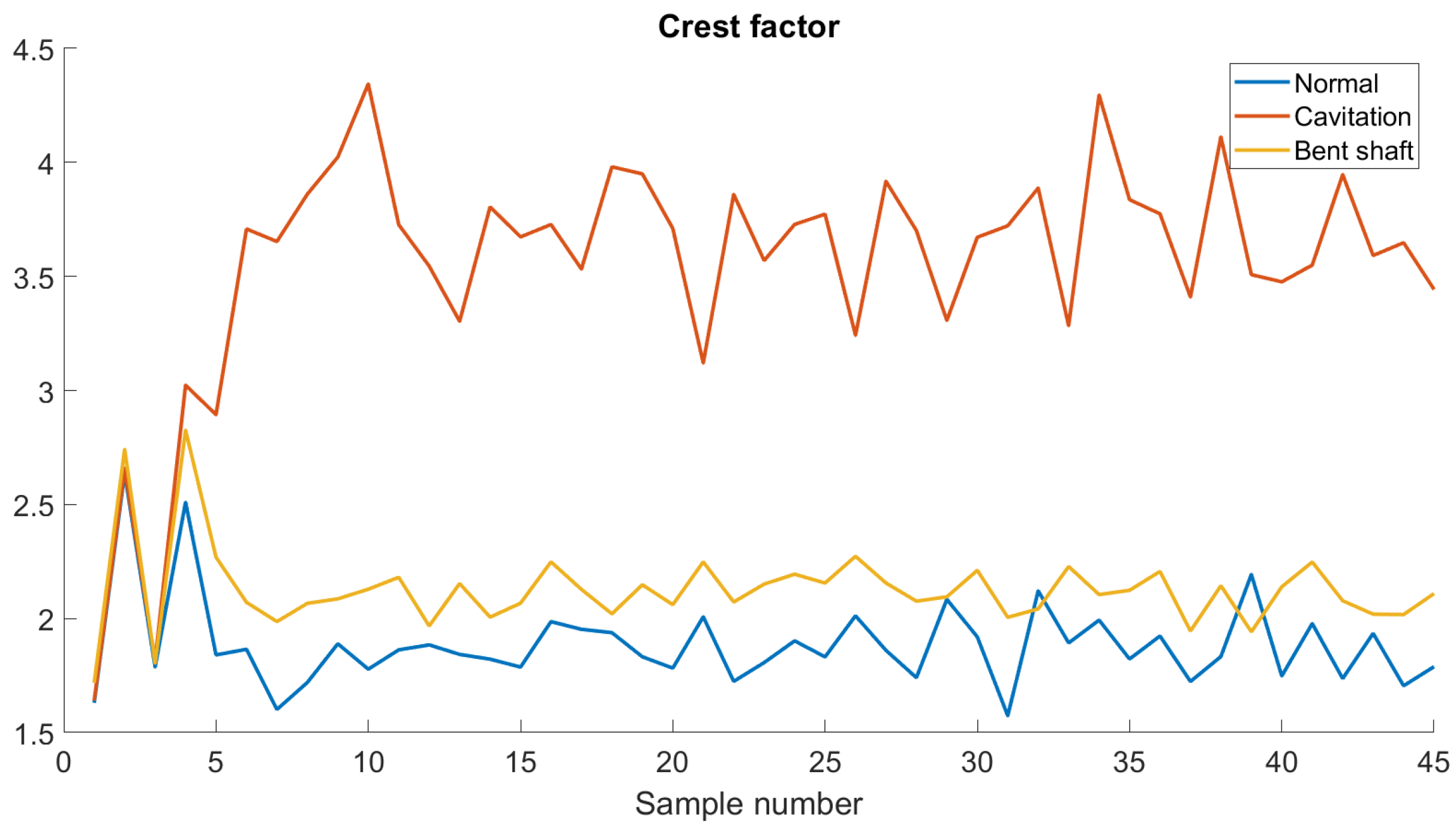
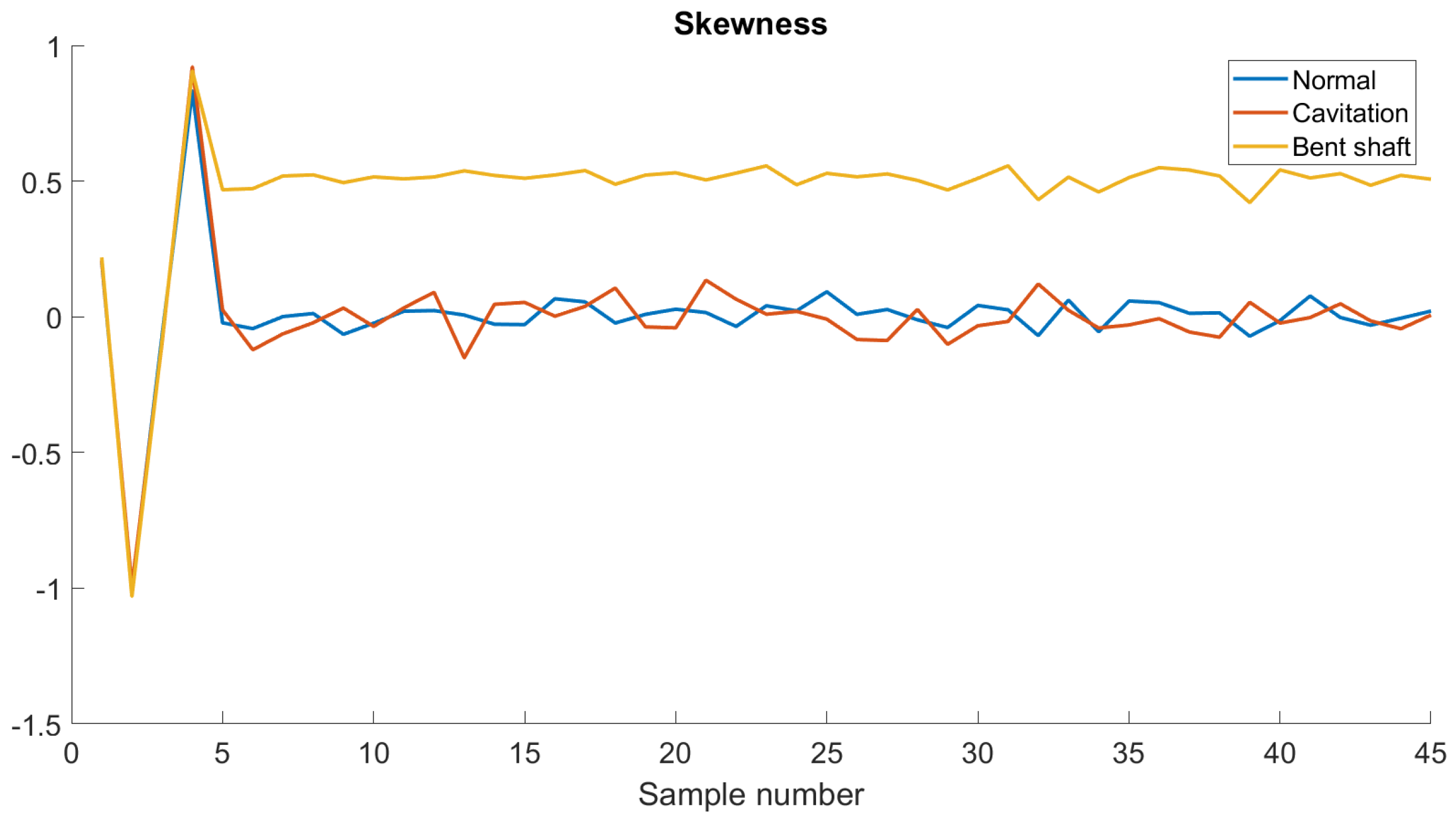

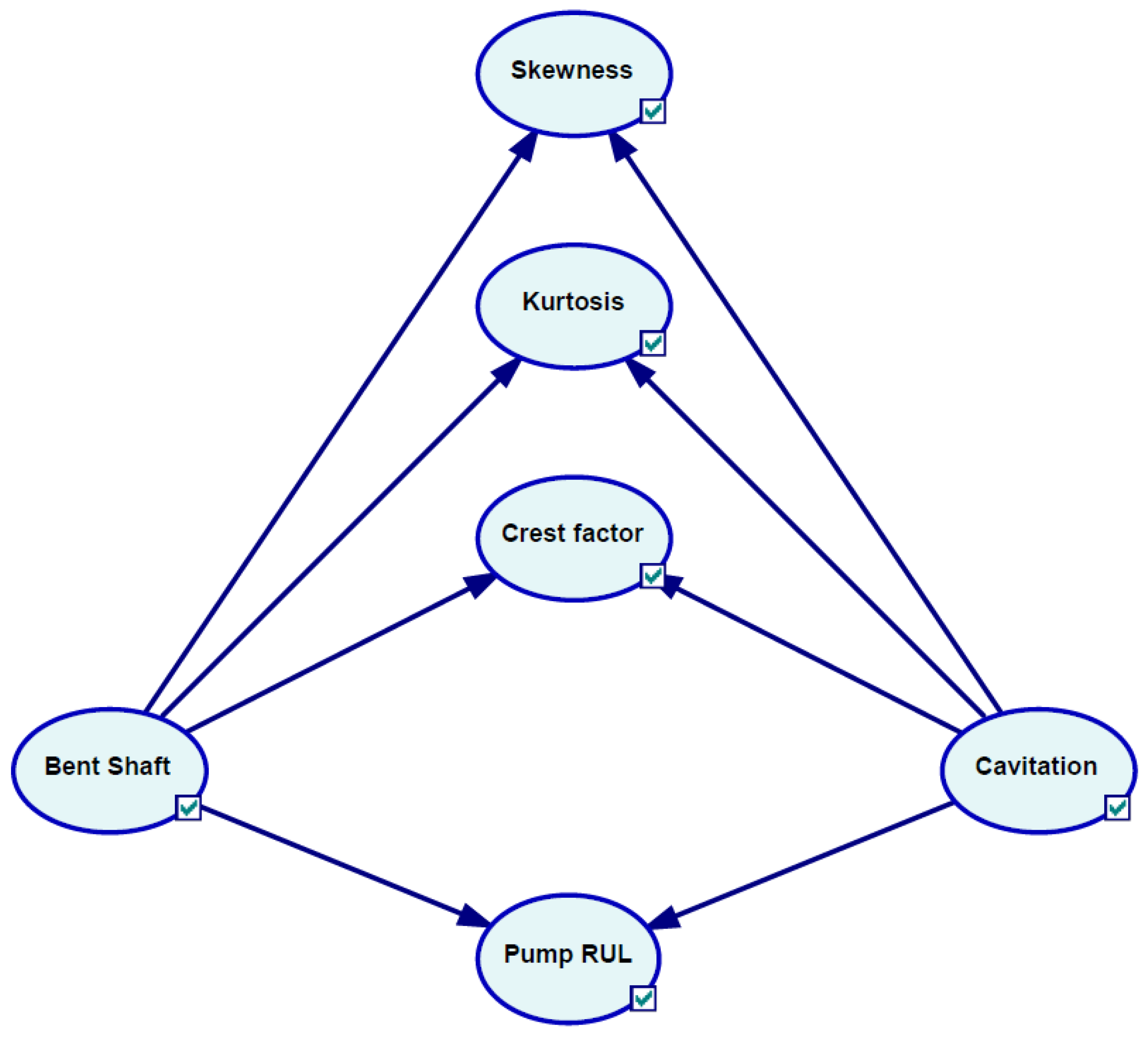
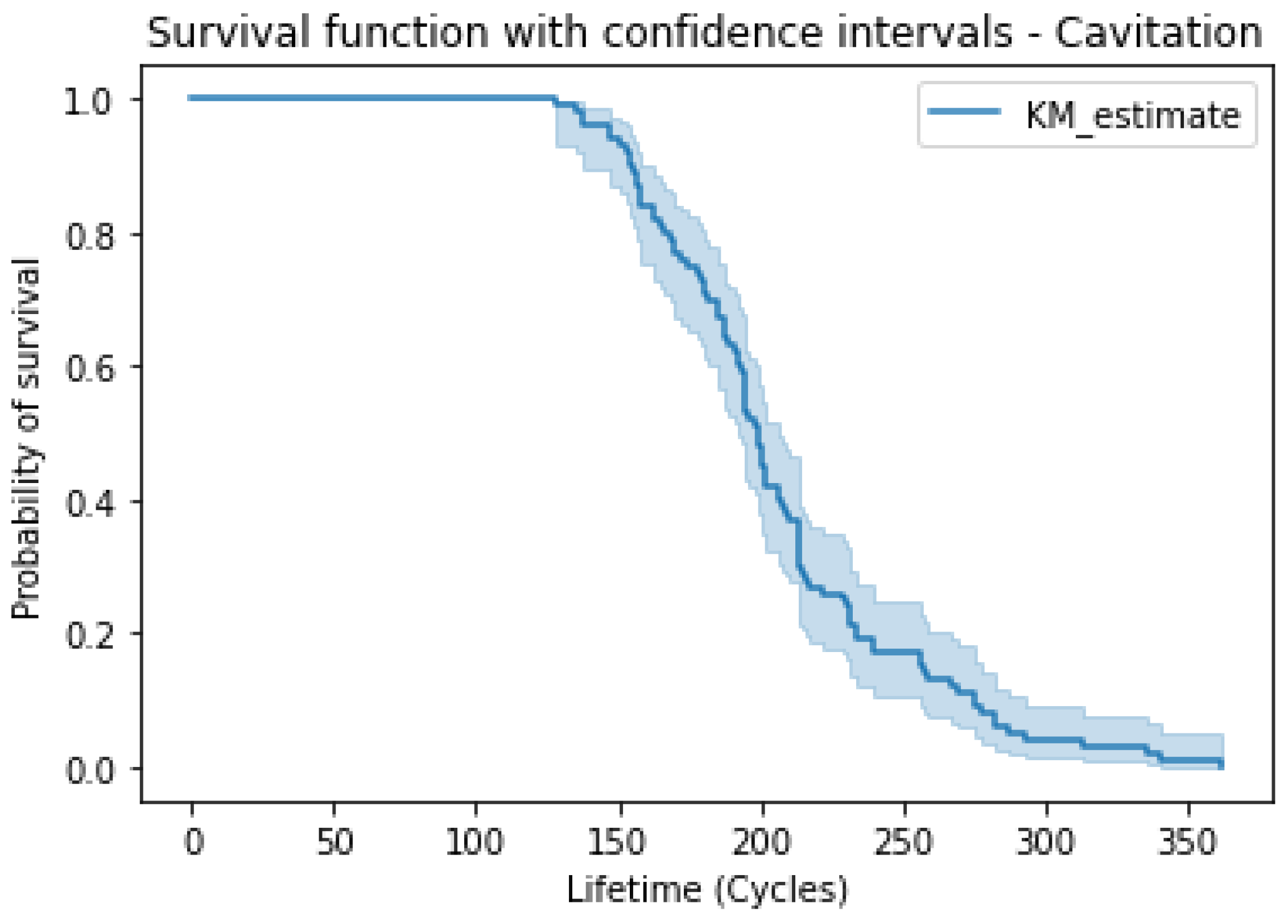
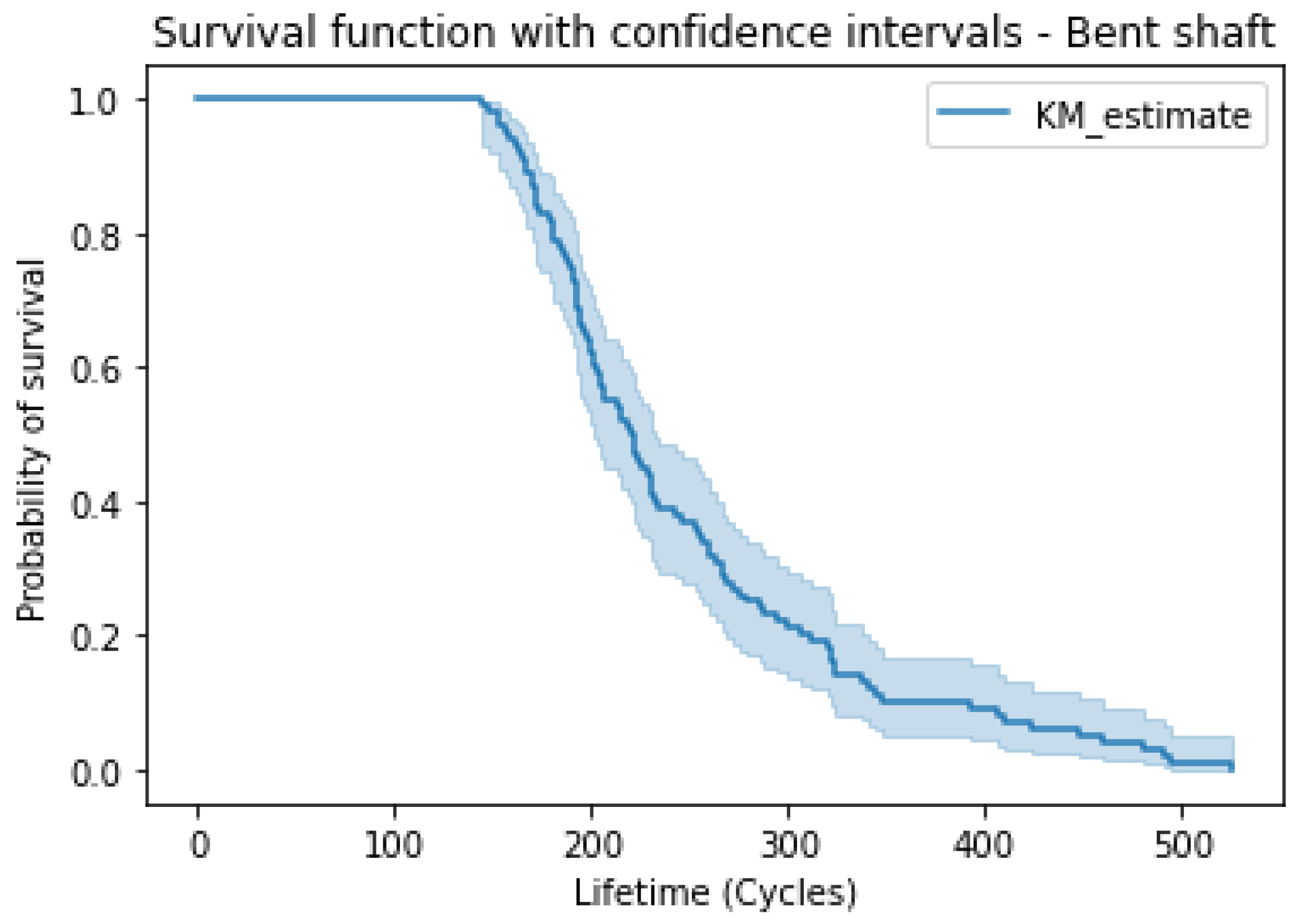

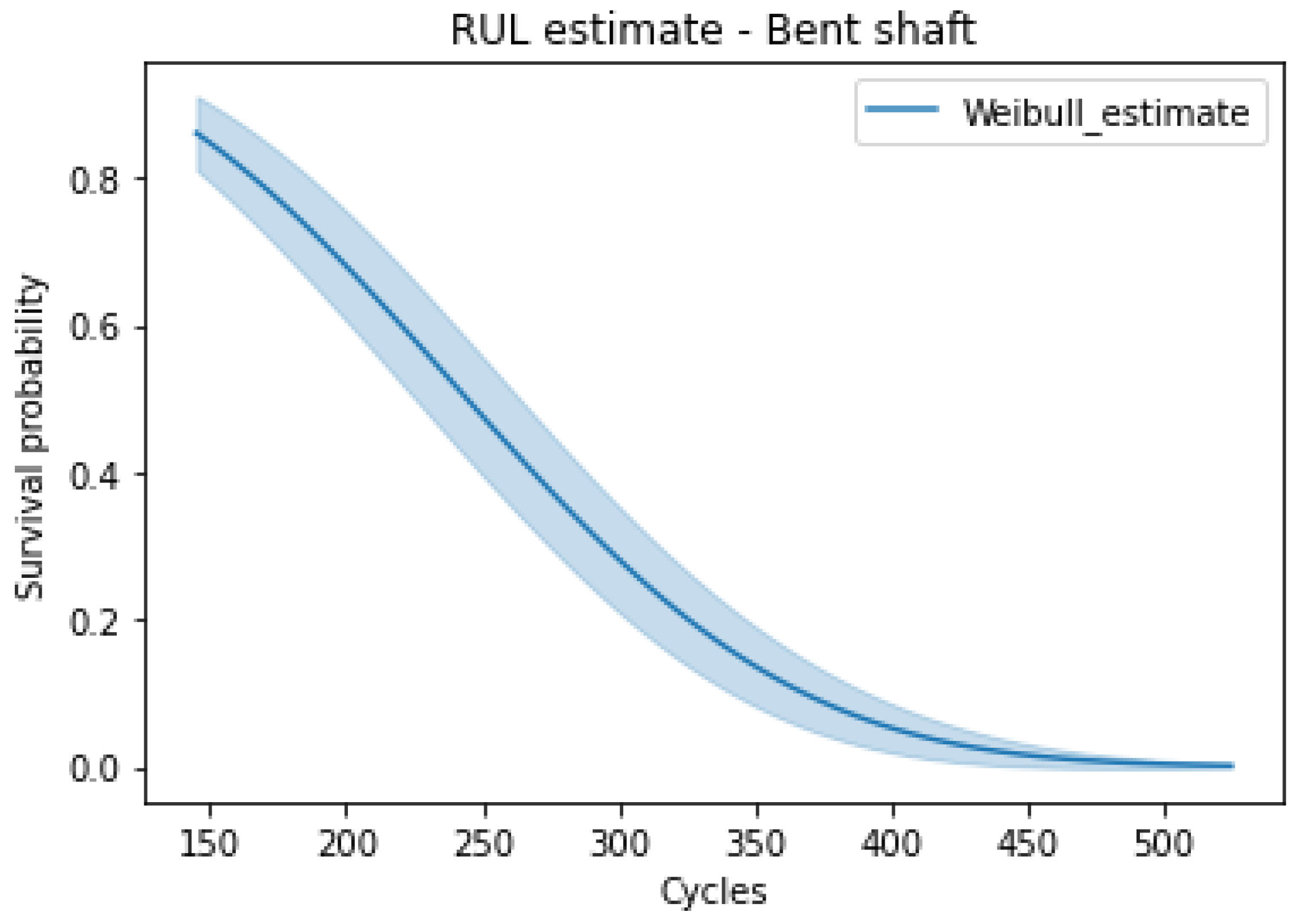
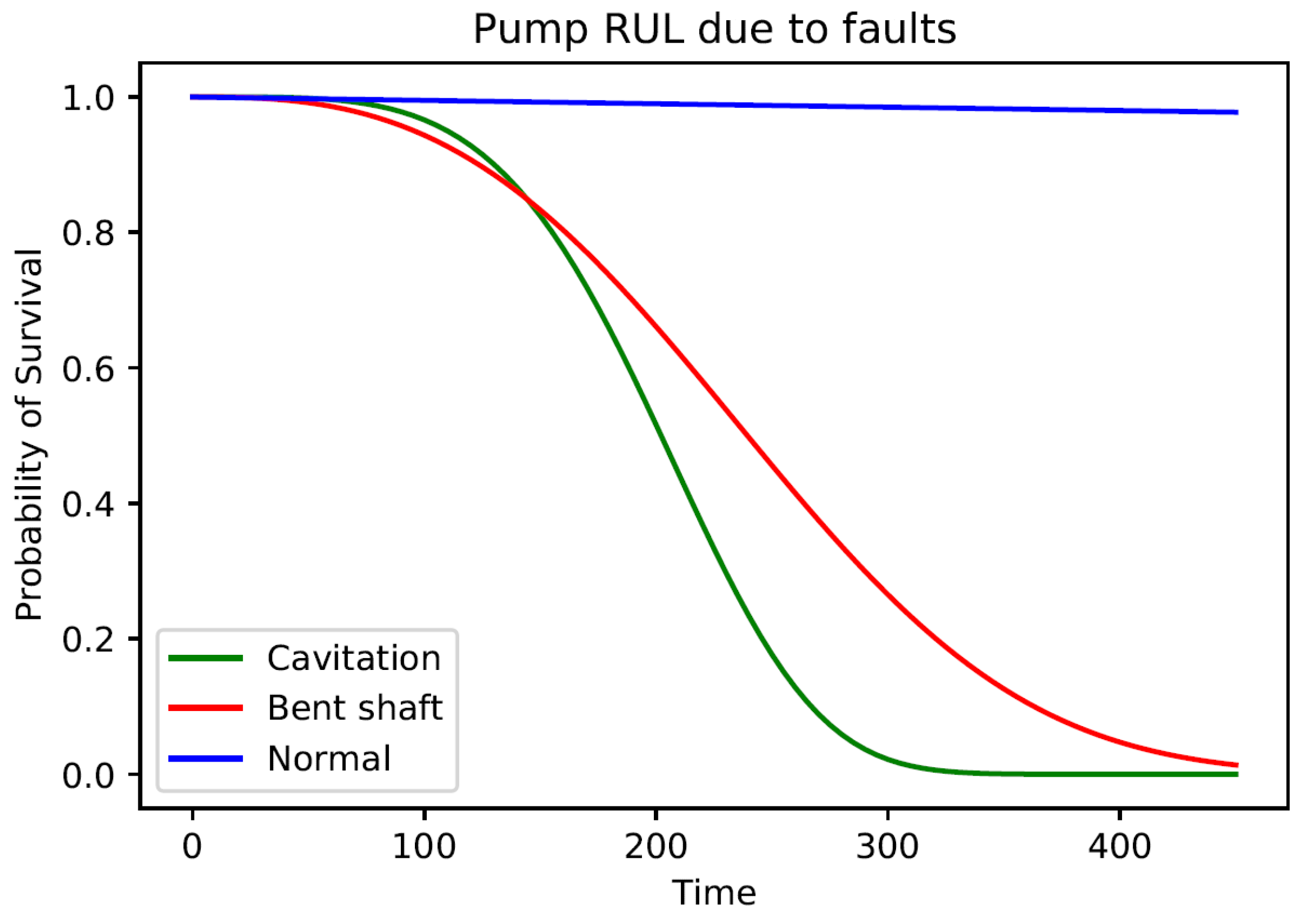
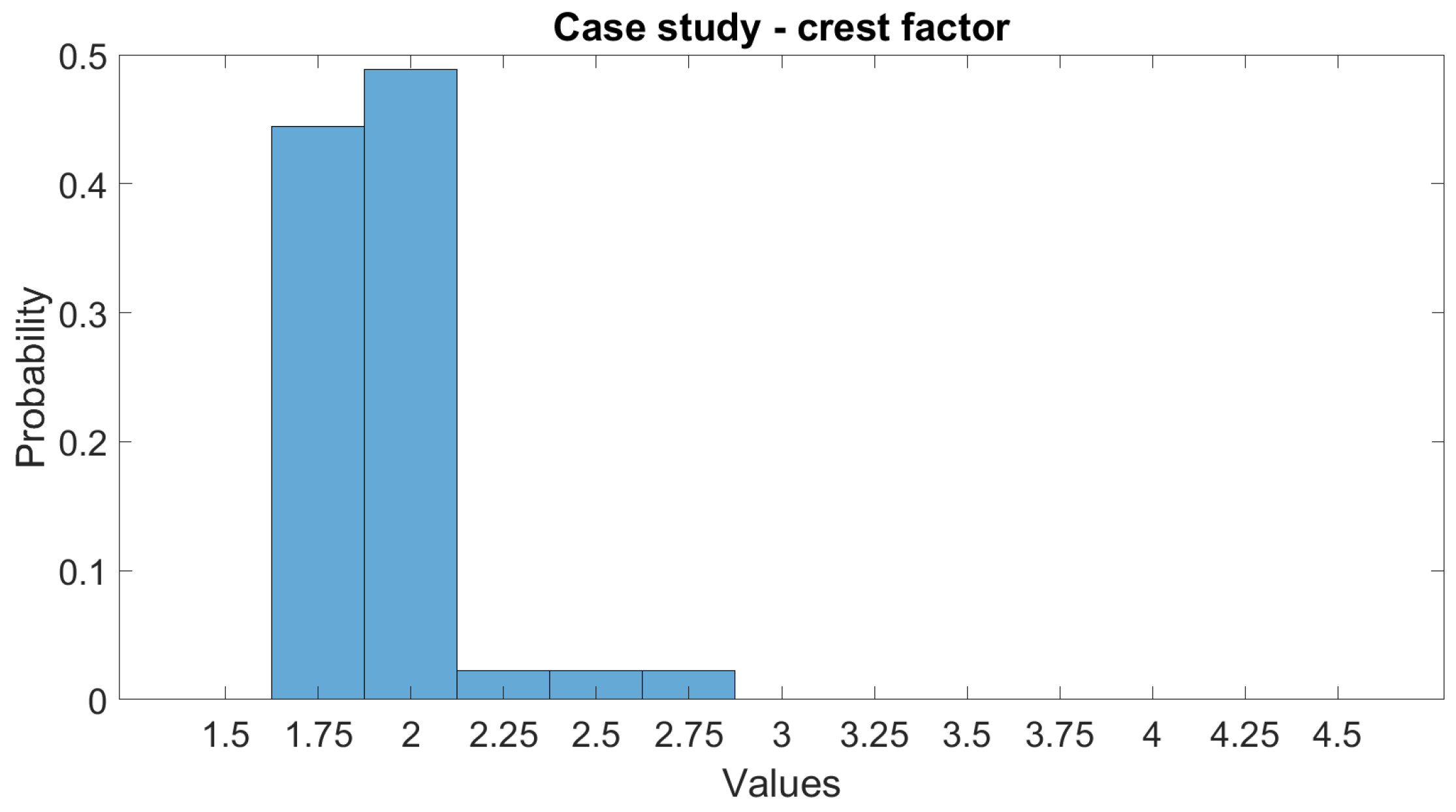

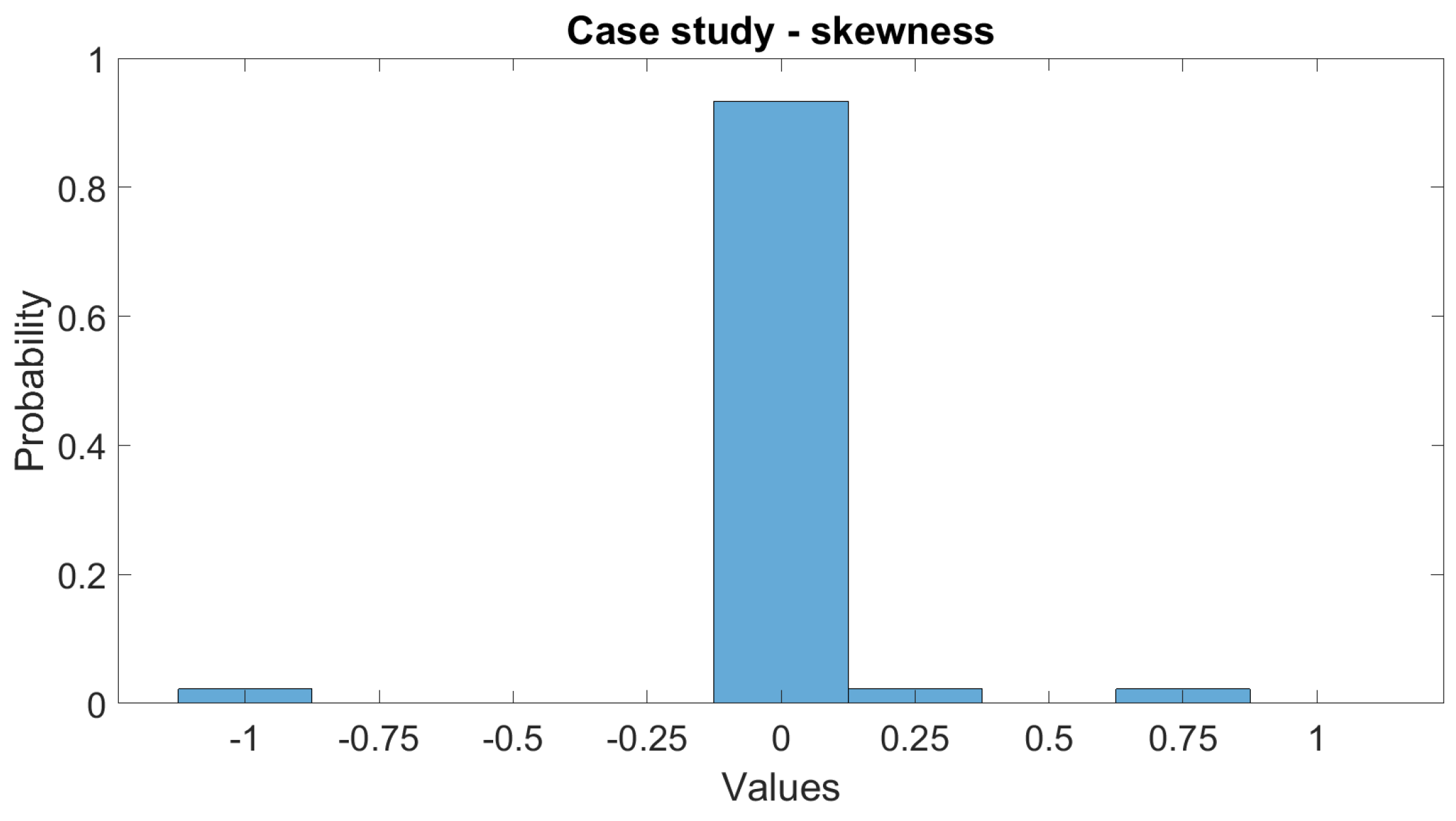
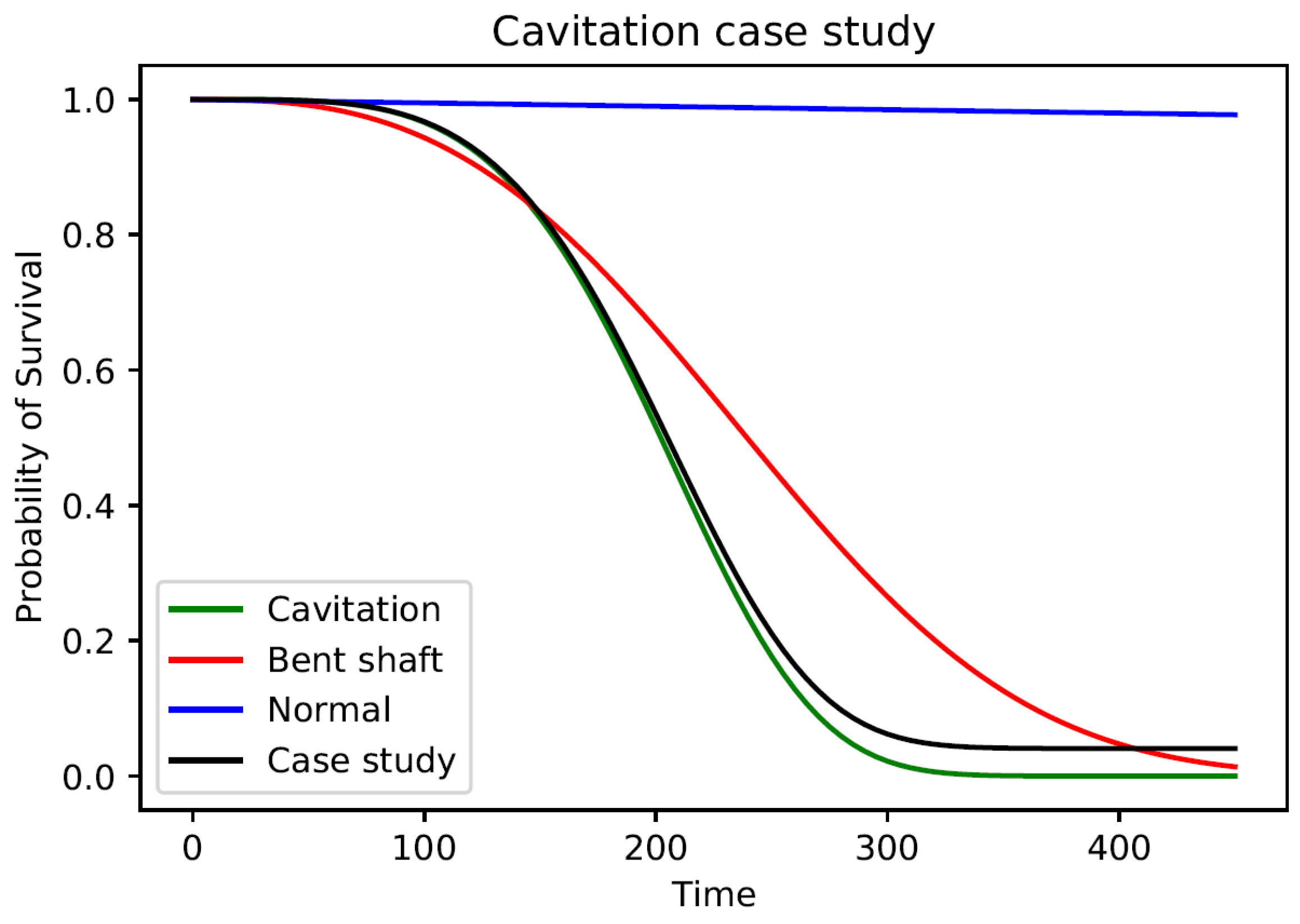
| Description | Quantity | ||
|---|---|---|---|
| Flow, rated | 0.38 | ms | (6000 gpm) |
| Head, rated | 8.96 | MPa | (1300 psi) |
| Speed | 59.33 | Hz | (3560 rpm) |
| Impeller diameter | 0.46 | m | (18 in) |
| Efficiency | 84.05 | % | |
| Temperature | 20.00 | °C | (68 °F) |
| Material selected | Carbon steel | ||
| Power, rated | 1747.18 | kW | (2343 hp) |
| Power, maximum | 2231.14 | kW | (2992 hp) |
| Motor rating | 2050.68 | kW | (2750 hp) |
| Cavitation | Pressure Range |
|---|---|
| Yes | 0 to 0.21 MPa (0 to 30 psi) |
| No | 0.21 to 9.65 MPa (30 to 1400 psi) |
| Bent Shaft | Temperature Range |
|---|---|
| No | −17.8 to 343.3 °C (0 to 650 °F) |
| Yes | 343.3 to 482.2 °C (650 to 900 °F) |
| Skewness Range | Kurtosis Range | Crest Factor Range |
|---|---|---|
| 0.75 to 1.00 | 3.25 to 3.50 | 4.25 to 4.50 |
| 0.50 to 0.75 | 3.00 to 3.25 | 4.00 to 4.25 |
| 0.25 to 0.50 | 2.75 to 3.00 | 3.75 to 4.00 |
| 0.00 to 0.25 | 2.50 to 2.75 | 3.50 to 3.75 |
| −0.25 to 0.00 | 2.25 to 2.50 | 3.25 to 3.50 |
| −0.50 to −0.25 | 2.00 to 2.25 | 3.00 to 3.25 |
| −0.75 to −0.50 | 1.75 to 2.00 | 2.75 to 3.00 |
| −1.00 to −0.75 | 1.50 to 1.75 | 2.50 to 2.75 |
| 2.25 to 2.50 | ||
| 2.00 to 2.25 | ||
| 1.75 to 2.00 | ||
| 1.50 to 1.75 |
Disclaimer/Publisher’s Note: The statements, opinions and data contained in all publications are solely those of the individual author(s) and contributor(s) and not of MDPI and/or the editor(s). MDPI and/or the editor(s) disclaim responsibility for any injury to people or property resulting from any ideas, methods, instructions or products referred to in the content. |
© 2023 by the authors. Licensee MDPI, Basel, Switzerland. This article is an open access article distributed under the terms and conditions of the Creative Commons Attribution (CC BY) license (https://creativecommons.org/licenses/by/4.0/).
Share and Cite
Kapuria, A.; Cole, D.G. Integrating Survival Analysis with Bayesian Statistics to Forecast the Remaining Useful Life of a Centrifugal Pump Conditional to Multiple Fault Types. Energies 2023, 16, 3707. https://doi.org/10.3390/en16093707
Kapuria A, Cole DG. Integrating Survival Analysis with Bayesian Statistics to Forecast the Remaining Useful Life of a Centrifugal Pump Conditional to Multiple Fault Types. Energies. 2023; 16(9):3707. https://doi.org/10.3390/en16093707
Chicago/Turabian StyleKapuria, Abhimanyu, and Daniel G. Cole. 2023. "Integrating Survival Analysis with Bayesian Statistics to Forecast the Remaining Useful Life of a Centrifugal Pump Conditional to Multiple Fault Types" Energies 16, no. 9: 3707. https://doi.org/10.3390/en16093707
APA StyleKapuria, A., & Cole, D. G. (2023). Integrating Survival Analysis with Bayesian Statistics to Forecast the Remaining Useful Life of a Centrifugal Pump Conditional to Multiple Fault Types. Energies, 16(9), 3707. https://doi.org/10.3390/en16093707






